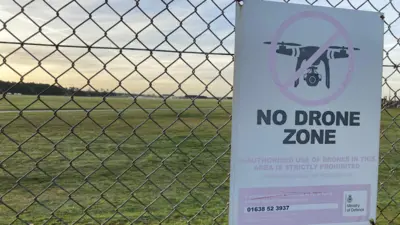We've updated our Privacy and Cookies Policy
We've made some important changes to our Privacy and Cookies Policy and we want you to know what this means for you and your data.
Voyager near Solar System's edge
- Author, Jonathan Amos
- Role, Science correspondent, ≥…»ÀøÏ ÷ News, San Francisco
Voyager 1, the most distant spacecraft from Earth, has reached a new milestone in its quest to leave the Solar System.
Now 17.4bn km (10.8bn miles) from home, the veteran probe has detected a distinct change in the flow of particles that surround it.
These particles, which emanate from the Sun, are no longer travelling outwards but are moving sideways.
It means Voyager must be very close to making the jump to interstellar space - the space between the stars.
Edward Stone, the Voyager project scientist, lauded the explorer and the fascinating science it continues to return 33 years after launch.
"When Voyager was launched, the space age itself was only 20 years old, so there was no basis to know that spacecraft could last so long," he told ≥…»ÀøÏ ÷ News.
"We had no idea how far we would have to travel to get outside. We now know that in roughly five years, we should be outside for the first time."
Dr Stone was (AGU) Fall Meeting, the largest gathering of Earth and planetary scientists in the world.
Particle bubble
Voyager 1 was launched on 5 September 1977, and its sister spacecraft, Voyager 2, on 20 August 1977.
The Nasa probes' initial goal was to survey the outer planets Jupiter, Saturn, Uranus and Neptune, a task completed in 1989.
They were then despatched towards deep space, in the general direction of the centre of our Milky Way Galaxy.
Sustained by their radioactive power packs, the probes' instruments continue to function well and return data to Earth, although the vast distance between them and Earth means a radio message now has a travel time of about 16 hours.
The newly reported observation comes from Voyager 1's Low-Energy Charged Particle Instrument, which has been monitoring the velocity of the solar wind.
This stream of charged particles forms a bubble around our Solar System known as the heliosphere. The wind travels at "supersonic" speed until it crosses a shockwave called the termination shock.
At this point, the wind then slows dramatically and heats up in a region termed the heliosheath. Voyager has determined the velocity of the wind at its location has now slowed to zero.
Racing onwards
"We have gotten to the point where the wind from the Sun, which until now has always had an outward motion, is no longer moving outward; it is only moving sideways so that it can end up going down the tail of the heliosphere, which is a comet-shaped-like object," said Dr Stone, who is based at the California Institute of Technology in Pasadena, California.
This phenomenon is a consequence of the wind pushing up against the matter coming from other stars. The boundary between the two is the "official" edge of the Solar System - the heliopause. Once Voyager crosses over, it will be in interstellar space.
First hints that Voyager had encountered something new came in June. Several months of further data were required to confirm the observation.
"When I realized that we were getting solid zeroes, I was amazed," said Rob Decker, a Voyager Low-Energy Charged Particle Instrument co-investigator from the Johns Hopkins University Applied Physics Laboratory in Laurel, Maryland.
"Here was Voyager, a spacecraft that has been a workhorse for 33 years, showing us something completely new again."
Voyager 1 is racing on towards the heliopause at 17km/s. Dr Stone expects the cross-over to occur within the next few years.
Although launched first, Voyager 2 was put on a slower path and is currently just over 14bn km from Earth.
Top Stories
More to explore
Most read
Content is not available








